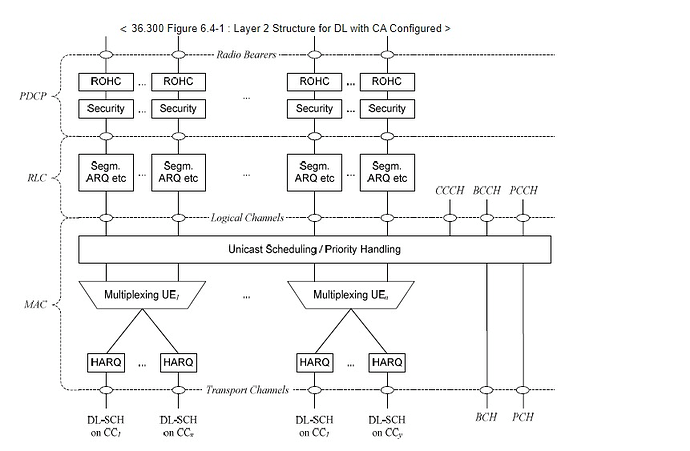I think value decided on basis of NR and LTE frame alignment lets say frame aligned then value 0 for offset.
If 3 ms offset between 4G and 5G frame then value of offset 3.
Yes, agreed!
How to discover that’s 3 ms, not 2 ms or 5 ms, if timing basis is different?
It’s vendor specific. I need to check in detail what specs mention.
Yep. This is my point. Couldn’t find any explicit mention to max timing offset os something similar on specs.
But generally value you find 0 in most of cases, as most of vendor use frame structure without any offset.
So, if we go to a new operator today, in spite of the vendor: would we say we need LTE NBs and gNBs synchronized?
Or we could say it’s up to LTE NB to figure this out and adapt offset?
Self adaptation i m not sure as not seen.
Now for sync relation we need to give our view for pros and cons for frame synchronized vs non sync then we can answer.
Same 5G cell can work as both SA and NSA
Why only 1 MAC entity for both PCC and SCC cells?
As CA is function of lower layer i.e. MAC and PHY.
MAC CE there for Scell activation and deactivation.
So it’s single MAC layer which produced TBS as per MIMO config over Pcell and Scell i.e. with 2x2 MIMO there are 4 TBS from Pcell and Scell which further converted to CW and transfer to UE.
But for scheduling, each cell should have their own scheduling and resource management, why not 2 MAC entity?
You have to know Scells are added removed in CA based on buffer occupancy in gNB MAC.
The concept is same for LTE and NR.
If you have Multiple MAC entities for each cell, it will be processing overload and also it will hard to keep track of a UE at a Cell level how much data is being sent and how much is in buffer.
gNB MAC Scheduler is a very good topic to be searched for How and Why MAC operates in this mode for CA.
With respect to 5G, what is difference between Carrier Aggregation and NR-DC?
CA is spectrum aggregation for the UE/User.
NR DC is where Core is serving to 4G & 5G eNB (dual connectivity).
4G & 5G. That’s EN-DC as per my understanding.
Common Core (NSA as example) for 4G & 5G.
Both RAN are connected to common Core.
CA is when UE is served by multiple cells which are connected by “Ideal backhaul”. Ideal backhaul means they are being served by same scheduler/real time scheduling. In CA buffer is splited at RLC layer
DC is when UE is served by multiple cells which are connected by “Non Ideal backhaul”. Non Ideal backhaul means they are being served by different scheduler/non real time scheduling (eg. over X2/Xn inter. In DC buffer is splited at PDCP layer
Thank you!
So DC is when UE is served by two NR-NR carriers like FR1 & FR2 and “non ideal backhaul”.
Is that understanding correct?
DC is general term.
It can be between LTE-LTE, LTE-NR and NR-NR.
